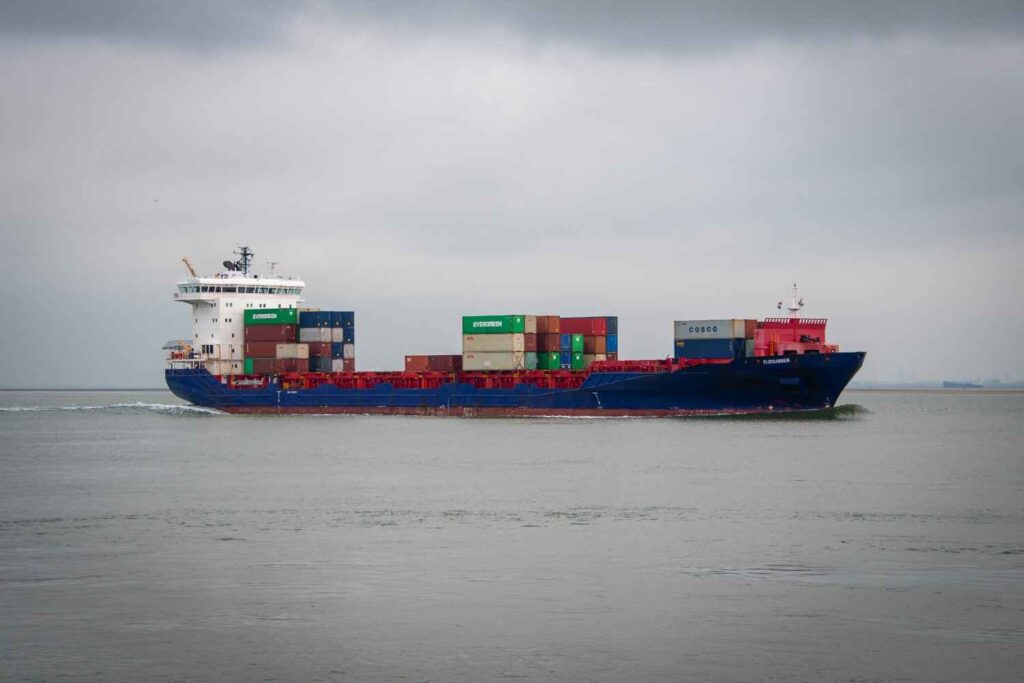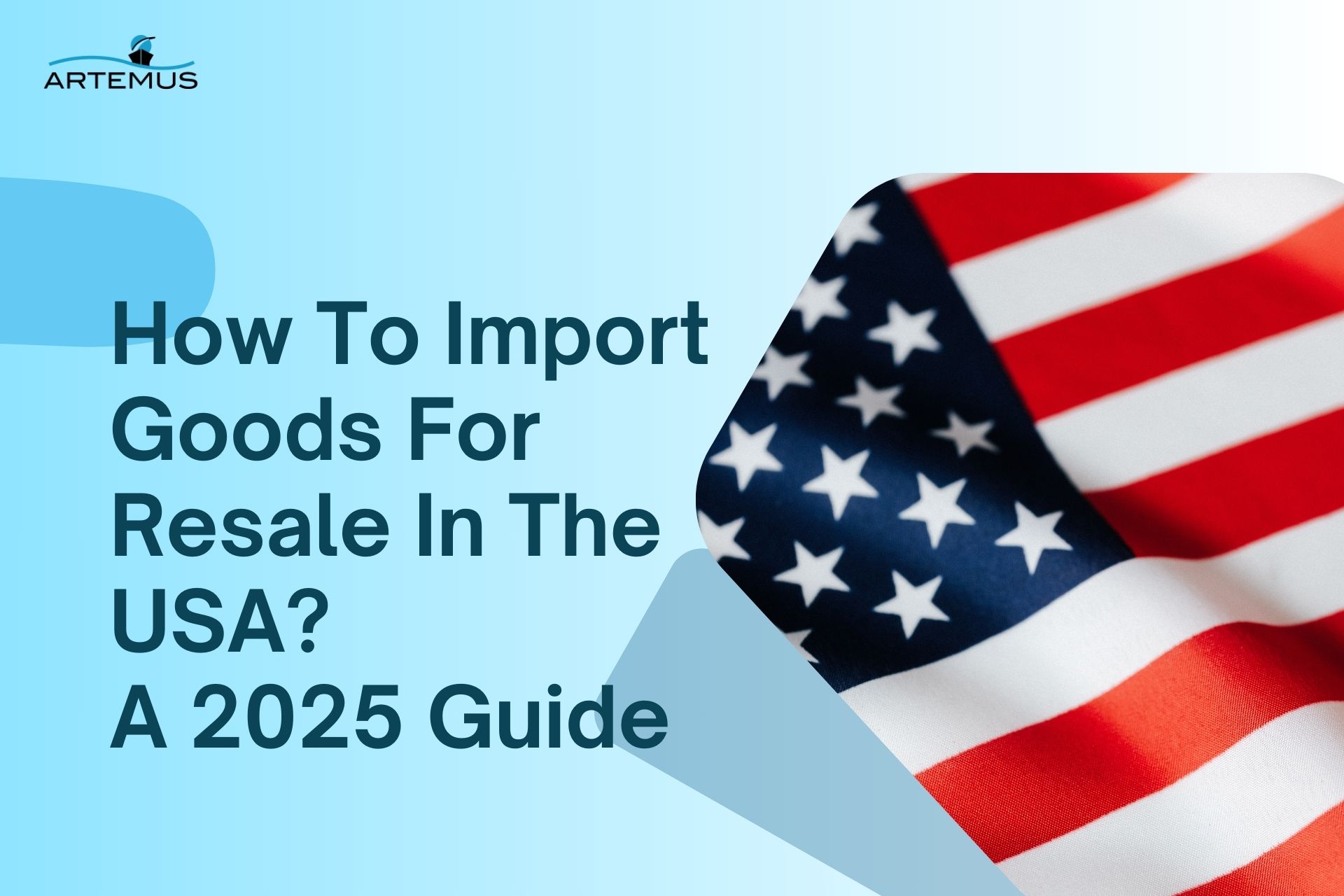
What Is Inbound Logistics & Outbound Logistics? A 2025 Guide
In the dynamic world of supply chain management, understanding the nuances of inbound and outbound logistics is crucial for operational

In the intricate web of global trade, importers are continually navigating the complexities of customs regulations to ensure the secure and efficient flow of goods. At the forefront of these regulatory considerations is the Import Security Filing (ISF) 5, a specialized filing designed for cargo transiting through the United States to a foreign destination. Understanding and meeting the ISF 5 filing requirements are pivotal for importers looking to uphold compliance, prevent disruptions, and foster a resilient supply chain.
This blog delves into the intricacies of ISF 5, unraveling the key data elements and compliance mandates that importers must navigate to guarantee a smooth journey for their shipments. Moreover, Artemus Transportation Solutions emerges as a reliable ally, offering a sophisticated ISF software solution tailored to meet the intricate demands of compliance. With a commitment to simplifying the import process, Artemus provides importers with a comprehensive toolset designed to streamline ISF filings.
Table Of Contents
The Overview of ISF-5 Filing illuminates a pivotal aspect within the Importer Security Filing (ISF) system, honing in on the specialized submission concerning bonded cargo. Unlike the encompassing ISF-10, the ISF-5 filing refines its focus to offer Customs and Border Protection (CBP) specific details about shipments containing bonded cargo.
This nuanced filing plays a critical role in fortifying maritime cargo security by providing comprehensive insights into the nature and logistics of bonded cargo, thus enabling CBP to assess potential risks more thoroughly. ISF-5 serves as an integral part of the broader ISF program, ensuring supply chain integrity, facilitating efficient customs processes, and mandating compliance for businesses engaged in the importation of bonded cargo.
Related: ISF Fees (Import Security Filing): When & How To Pay?
Navigating the intricacies of international trade, and understanding the significance of key data elements is paramount for businesses involved in ISF-5 filing, ensuring compliance and transparency in the movement of bonded cargo.
This unique identifier not only serves as a distinctive marker for the carrier tasked with transporting the goods but also acts as a linchpin for precise tracking and accountability. Through this code, the entire journey of the shipment can be meticulously monitored, offering transparency and accountability crucial for regulatory compliance.
The specificity of identifying the location where goods are loaded into the bonded container holds paramount importance. It ensures transparency for customs authorities, allowing them to track the movement of cargo from its initial point of loading, facilitating effective oversight and regulatory adherence.
Functioning as a reference point for tracking and identification, the tracking number is a vital component for efficient monitoring of the bonded shipment. This number enables a seamless process from departure to arrival, enhancing logistics management and ensuring timely interventions when necessary.
The designation of the in-bond entry type provides valuable insights into the nature of the cargo movement and its specific status. This information aids customs authorities in categorizing and managing shipments according to their unique characteristics, contributing to effective regulatory oversight.
Serving as a unique reference for tracking and record-keeping purposes, the in-bond entry number is instrumental in maintaining a comprehensive record of the shipment’s journey. It facilitates efficient data management and supports compliance with regulatory documentation requirements.
Applicable for shipments with a direct trajectory from the port of arrival to another U.S. port, the IT number streamlines and expedites the transportation process. This expedited movement ensures timely deliveries and is particularly crucial for time-sensitive cargo.
The unique identifier for the bill of lading or air waybill is indispensable for accurate documentation. It serves as a reference point for customs clearance, enabling authorities to cross-reference information efficiently and facilitating a smooth regulatory process.
Representative of the shipment’s origin, the foreign port code provides essential information about the initial point of embarkation. This detail aids in establishing the cargo’s journey and origin, contributing to effective regulatory assessments.
Anticipating the arrival date at the U.S. port is a critical element in scheduling and managing the inspection and clearance processes. Customs authorities can efficiently plan resources, ensuring a streamlined process upon arrival.
This number holds significance in identifying goods admitted into a Foreign Trade Zone, signifying a distinct status that requires specific considerations. Understanding the admission number is crucial for compliance within the FTZ framework.
Specifying whether the bonded shipment is subject to a quota within a Foreign Trade Zone is essential for adherence to regulatory limitations. This information ensures that shipments align with established quotas and comply with trade regulations.
Indicating how the bonded cargo is transported, whether by vessel, truck, or air, assists in planning and coordinating logistics. This detail is crucial for both regulatory compliance and efficient supply chain management.
The identification code for the facility involved in handling or examining the bonded shipment contributes to the efficiency of cargo processing. This code aids in coordinating activities at the designated facility.
The code for the operator of the CFS or CES facility provides clarity on the responsible party for the cargo’s intermediate handling. Understanding the operator code ensures accountability and transparency in the cargo handling process.
Noting any country through which the bonded shipment passes en route to the United States offers insights into the logistical route and potential regulatory considerations. This detail is crucial for assessing the international journey of the cargo.
Identifying the entity or individual in the U.S. responsible for receiving the bonded cargo ensures proper coordination at the final destination. This information is pivotal for the seamless transition of cargo within the U.S. and facilitates efficient distribution.
Details of the entity or individual manufacturing or supplying the goods contribute to transparency and regulatory compliance. This information aids customs authorities in verifying the authenticity and origin of the goods.
Designating the party, usually the consignee, to be notified upon the arrival of the bonded shipment streamlines communication and ensures efficient cargo pickup and distribution. This detail is critical for timely notifications and coordination in the final stages of the shipment’s journey.
Related: How To Check ISF Filing Status? A Step-By-Step Guide
Navigating the Importer Security Filing (ISF) landscape requires clarity on who is obligated to file ISF-5. Here’s a concise breakdown in pointers:
1. Bonded Cargo Importers: Businesses importing bonded cargo into the United States are required to file ISF-5, ensuring compliance with Customs and Border Protection (CBP) regulations.
2. Entities Operating Foreign Trade Zones (FTZ): Companies managing goods admitted into Foreign Trade Zones fall under the purview of ISF-5 filing requirements, reflecting the specialized nature of these shipments.
3. Transportation And Logistics Providers: Carriers, freight forwarders, and other entities involved in the transportation and logistics of bonded cargo are responsible for filing ISF-5 to provide essential information to CBP.
4. Those Utilizing In-Bond Transportation: Businesses opting for in-bond transportation, where cargo moves from one U.S. port to another, are obligated to file ISF-5 to facilitate the smooth transit of goods.
5. Shippers And Consignees: Both the shipper (sender) and consignee (receiver) of bonded cargo must participate in ISF-5 filing, ensuring accurate and comprehensive information is submitted to CBP.
6. Customs Brokers: Customs brokers, acting as intermediaries between importers and CBP, play a pivotal role in ISF-5 filing, ensuring that the required information is accurately submitted on behalf of their clients.
7. Manufacturers And Suppliers: Entities responsible for manufacturing or supplying the goods included in the bonded cargo must engage in ISF-5 filing, contributing essential details for regulatory compliance.
8. Companies Engaged In International Trade: Any business involved in international trade that includes the importation of bonded cargo to the United States falls within the scope of ISF-5 filing requirements.
9. Entities Operating Container Freight Stations (CFS) or Centralized Examination Stations (CES): Operators of CFS or CES facilities, involved in handling or examining bonded cargo, are obligated to file ISF-5 to provide critical information about these shipments.
10. Importers Of Goods Admitted To FTZs: Businesses importing goods admitted into Foreign Trade Zones are subject to ISF-5 filing requirements, reflecting the specific considerations associated with these shipments.
Related: ISF Late Filing Fee: Exact Cost & 6 Tips To Manage Appeals
The integration of ISF-5 (Importer Security Filing) with the customs clearance process is a critical facet of international trade, ensuring regulatory compliance and facilitating the smooth flow of bonded cargo through U.S. ports. Here’s an overview of how ISF-5 is seamlessly integrated into the customs clearance journey:
ISF-5 necessitates the early submission of detailed information about bonded cargo, including the nature of the goods, their origin, and the logistics of their movement. This proactive approach enables Customs and Border Protection (CBP) to assess potential security risks well in advance.
The data submitted through ISF-5 allows CBP to conduct a comprehensive risk assessment before the cargo arrives in the U.S. By identifying potential security concerns early on, CBP can take preemptive actions, enhancing the overall security of the supply chain.
ISF-5 fosters collaboration between various stakeholders in the import process, including importers, customs brokers, carriers, and CBP. This collaborative effort ensures that all parties are on the same page regarding the details of the bonded cargo, streamlining communication and reducing the risk of errors or discrepancies.
The early submission of ISF-5 data expedites the customs clearance process. CBP can review and validate the information in advance, allowing for more efficient processing when the bonded cargo arrives at the U.S. port. This efficiency is crucial for preventing delays and ensuring a timely release of the cargo.
ISF-5 integration reinforces security measures at U.S. ports by providing CBP with crucial information about bonded cargo. This proactive approach enables CBP to implement targeted security measures, such as inspections or examinations, based on the risk assessment conducted using the submitted ISF-5 data.
Compliance with ISF-5 filing requirements reduces the likelihood of penalties or delays during the customs clearance process. Businesses that integrate ISF-5 effectively into their operations demonstrate a commitment to regulatory adherence, fostering a smoother customs experience.
The integration of ISF-5 promotes transparency in the supply chain by ensuring that accurate and detailed information about bonded cargo is available throughout its journey. This transparency is beneficial for all stakeholders involved and contributes to the overall integrity of the supply chain.
ISF-5 integration allows for the verification of data accuracy early in the process. Any discrepancies or issues can be addressed proactively, minimizing the chances of errors that could lead to customs delays or penalties.
Related: ISF Bond Cost Breakdown & Management For Import Success

Audit processes for ISF-5 (Importer Security Filing) filings play a crucial role in ensuring compliance with customs regulations and maintaining the integrity of the supply chain. Here’s an exploration of the audit procedures associated with ISF-5 filings:
Audit processes begin with a thorough review of the submitted ISF-5 documentation. This includes scrutinizing the accuracy and completeness of information such as bill of lading details, cargo descriptions, and consignee information to ensure alignment with regulatory requirements.
Auditors assess whether ISF-5 filings were submitted within the stipulated timeframe, typically 24 hours before the vessel’s departure to the United States. Timeliness compliance is crucial for allowing Customs and Border Protection (CBP) to conduct risk assessments and enhance security measures effectively.
Auditors scrutinize the data provided in ISF-5 filings to verify its accuracy and consistency with other shipping documents. Any discrepancies in information related to the bonded cargo, including item descriptions, quantities, and value, are thoroughly examined for correction.
ISF-5 filings include information crucial for assessing the security risk associated with the bonded cargo. Audit processes ensure that importers have adhered to security measures outlined in the filing, allowing Customs authorities to proactively address potential security concerns.
Auditors conduct comprehensive customs compliance checks to ensure that the ISF-5 filing aligns with broader customs regulations. This includes confirming that the filing adheres to specific requirements for bonded cargo and any additional regulations related to the nature of the goods being imported.
Audit processes assess the level of communication and collaboration between stakeholders involved in the import process, including importers, customs brokers, carriers, and Customs and Border Protection. Effective communication is crucial for addressing any issues or discrepancies in a timely manner.
Importers are required to maintain records related to ISF-5 filings for a specified period. Auditors verify the adequacy and accuracy of these records, ensuring that importers have a robust system in place for maintaining documentation associated with the bonded cargo.
If discrepancies or issues are identified during the audit, importers may be required to implement corrective actions promptly. This could involve amending the ISF-5 filing, providing additional information, or addressing any non-compliance issues to align with customs regulations.
Auditors assess whether importers are at risk of penalties due to non-compliance with ISF-5 requirements. If penalties are deemed necessary, the audit process ensures that they are appropriately assessed based on the severity of the non-compliance.
The audit process goes beyond compliance checks and can include recommendations for continuous improvement in ISF-5 filing processes. This ensures that importers are equipped to enhance their filing procedures and stay proactive in meeting regulatory requirements.
Related: Late ISF Filing: What To Do If Missed The Deadline?
Artemus stands out as the preeminent ISF (Importer Security Filing) software solution, offering a comprehensive and seamless platform for businesses navigating the complexities of compliance in international trade.
With its user-friendly interface and robust features, Artemus streamlines the ISF filing process, ensuring accurate and timely submissions. This software goes beyond mere compliance, incorporating advanced functionalities such as real-time data verification, automated risk assessments, and collaborative tools that facilitate communication among stakeholders.
Artemus not only minimizes the risk of errors and penalties associated with ISF filing but also enhances overall efficiency, making it an indispensable choice for businesses committed to a smooth and compliant importation process.
Related: When Does ISF Need To Be Filed? Know The Deadline
ISF-5 must be filed at least 24 hours before the vessel carrying the goods departs for the United States.
ISF-5 pertains to goods transported in bond within the United States, while ISF-10 applies to foreign shipments destined for an FTZ (Foreign Trade Zone) within the country.
ISF 5 info includes detailed data on bonded cargo moving in bond within the United States, vital for Customs and Border Protection.

In conclusion, adhering to ISF-5 filing requirements is not merely a regulatory obligation but a strategic imperative for businesses engaged in international trade. The meticulous submission of essential details regarding bonded cargo destined for in-bond transportation within the United States ensures compliance with Customs and Border Protection standards.
Embracing a comprehensive approach to ISF-5 filing, businesses not only mitigate the risk of penalties and delays but also contribute to a secure and streamlined supply chain. As the backbone of an efficient importation process, ISF-5 filing stands as a testament to the commitment of businesses to navigate the complexities of international trade with precision and foresight.

In the dynamic world of supply chain management, understanding the nuances of inbound and outbound logistics is crucial for operational

In today’s interconnected world, businesses rely heavily on global trade to expand their markets, access new resources, and drive growth.

Importing goods for resale in the USA presents a lucrative business opportunity, but navigating the complexities of U.S. customs regulations,
Get In Touch
Artemus’ Software Solutions for ISF, AMS, Japan AFR, eManifest Canada, & Panama B2B filings.